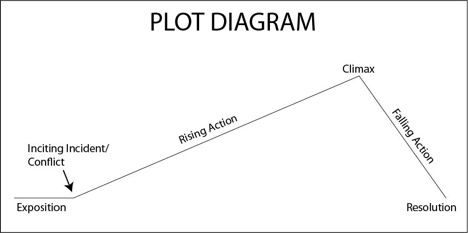Key Elements of Narrative and How to Use Them in Your Content Marketing
Long before we could write, people told stories. Unsurprisingly, we still gravitate to narratives when seeking information.
Using narrative elements can transform a basic blog into a captivating read, helping boost the immediate appeal and long-term value of your content.
Key elements of narrative include:
- Characters
- Conflict and resolution (plot)
- Personification
Businesses should include narrative elements in content to best engage and encourage action from their target customers.
1. Characters Establish a Subject to Focus Your Content.
Characters are the focal point of a narrative: they encourage your audience to identify with and become invested in your content.
Your content should focus on the main character. The characters in your content don’t necessarily need to be people, but establishing a main subject makes the content easier to follow.
For example, your character can be a lonely product, waiting to find a new home or business to impact.
Use characters as vehicles for your ideas, and to carry the audience from the start to finish.
To add definition to characters in your story, give them distinct traits, history, and trajectory.
People want to see characters develop throughout the story. To satisfy your audience, content must show the character-subject evolve in meaningful ways over the arc of the content. Reference oft-used character arcs such as “rags to riches” or an illustrious “aha” moment for inspiration for creating character arc.
2. Conflict & Resolution Speaks Directly to Audience Problems.
People read content online to solve their problems – business or personal.
To make your content appeal to audiences looking to solve their problems, create a plot to your story that references a conflict and provides a solution to that problem.
For example, using the product character analogy, you can trace your character’s journey from its lonely state to its new, active and happy home.
The arc of your content should follow a plot diagram, a well-established model that includes a story’s key narrative elements:
- Conflict
- Action
- Climax
- Resolution
As such the “plot” of your content addresses the tension between the audience and their issues while leading them to a resolution. Be sure to reference conflict throughout the content to sustain engagement.
For example, the climax is often when you deliver the core solution to the reader’s foremost problem. You can ramp into the main solution with introductory points and use later points to supplement.
Pacing is key to sustaining the audience’s attention.
Too little tension makes for boring content. Too much detail can be distracting. Maintain a rhythm, develop the plot, and deliver the reader to the solution at an appropriate clip.
3. Personification Helps Audiences Relate To Your Content.
People want to learn how other people overcame obstacles similar to their own. Personifying non-human characters in your content helps to make them more concrete and understandable.
To further this engagement, Use anecdotal evidence and examples to help to make your content both more relatable and retentive.
Anecdotes invite people to imagine what they would do in a given scenario, which activates the creative areas of the brain.
Anecdotes and personification allow you to enhance the readability of your content, illustrate complex ideas, and make the content personal for the reader.
Using Narrative Elements In Your Content Marketing
Narrative is a highly engaging, retentive, and meaningful way to transmit information.
Including characters, plot, and personification in your content strategy is sure to enhance the appeal, impact, and value of your content.




